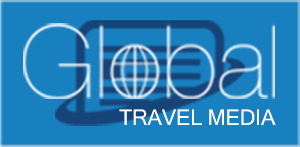Gogo (NASDAQ: GOGO), the leading global provider of broadband connectivity products and services for aviation, today announced its financial results for the quarter ended June 30, 2019.
Highlights for Q2 2019
- Consolidated service revenue of more than $173 million, up more than 9% from Q2 2018
- Net loss of $84 million, which includes a $58 million loss on extinguishment of debt due to the $925 million debt refinancing
- Adjusted EBITDA(1) of $37.8 million, up from $18.9 million in Q2 2018
- Combined segment profit from CA-NA and CA-ROW of $6.9 million, up from a combined segment loss of $17 million in Q2 2018
- Total Aircraft Online for Commercial Aviation of 3,134, up 81 from Q1 2019
- Cash Flow from Operating Activities of $11.7 million; Unlevered Free Cash Flow(1) of positive $36 million, up $73 million from negative $37 million in Q2 2018
- Renewal of our 2Ku agreement with American Airlines and our commercial relationship with T-Mobile
- In May, Delta Airlines conducted a two-week trial of free Wi-Fi on 55 domestic 2Ku daily flights as part of Delta’s evaluation of offering free Wi-Fi to passengers
Second Quarter 2019 Consolidated Results
- Gogo completed a $925 million debt refinancing to lower borrowing costs and extend debt maturities, including the repurchase of $159 million of the Company’s 3.75% convertible senior notes due 2020.
- Consolidated revenue totaled $213.7 million.
- Service revenue grew in all three segments to a consolidated $173.7 million, an increase of more than 9% from Q2 2018.
- After excluding the $58 million loss on extinguishment of debt, net loss of $84 million would have been $26 million, an improvement of 30% year-over-year.
- Adjusted EBITDA was $37.8 million as compared with $18.9 million in Q2 2018, driven primarily by strong service revenue growth and lower operating expenses.
- Free Cash Flow(1) in Q2 2019 was negative $3 million, an improvement from negative $35 million in the prior-year period. In the first half of 2019, Free Cash Flow was negative $37 million, an improvement from negative $144 million in the prior-year period.
- Cash and cash equivalents were $182 million as of June 30, 2019 as compared with $189 million as of March 31, 2019, and reflects $40 million of interest payments made in Q2 2019.
- 2Ku aircraft online reached 1,216 as of June 30, 2019, an increase of 109 aircraft in Q2 2019. Gogo had a 2Ku backlog of approximately 900 aircraft as of June 30, 2019.(2)
“Gogo delivered a solid second quarter, driven by strong underlying service revenue, operational execution and successful implementation of cost controls, including lower than expected satcom expense,” said Oakleigh Thorne, Gogo’s President and CEO. “Following our excellent second quarter financial performance, we are again raising our 2019 Adjusted EBITDA guidance.”
“We continue to strengthen our balance sheet and expect to improve Free Cash Flow by at least $100 million in 2019,” said Barry Rowan, Gogo’s Executive Vice President and CFO. “Looking ahead, we are on track to drive Gogo to meaningfully positive annual Free Cash Flow in 2021.”
Second Quarter 2019 Business Segment Results
Commercial Aviation – North America (CA-NA)
- Service revenue increased to $96.4 million, up 1% from the prior-year period, due to increased take rates offset by the 555 de-installations from American Airlines aircraft that began in early 2018 and were completed in Q2 2019.
- Aircraft online increased sequentially to 2,443 from 2,412 as of March 31, 2019.
- Equipment revenue decreased to $9.3 million as compared with $23.9 million for the prior-year period, due to lower 2Ku installations and a shift in mix from airline-directed to turnkey installations.
- Total revenue decreased to $105.7 million, down 12% from Q2 2018, due to the decline in equipment revenue.
- Segment profit increased to $24.2 million from $7 million in Q2 2018, due primarily to stronger service revenue and lower operations costs.
- Take rates increased to 12.7% in Q2 2019, up from 11.2% in the prior-year period, an improvement of more than 13%.
Commercial Aviation – Rest of World (CA-ROW)
- Service revenue increased to $22.6 million, up 49% from Q2 2018, driven by an increase in aircraft online.
- Aircraft online increased to 691, up more than 50% from 459 as of June 30, 2018.
- Equipment revenue decreased to $14.1 million, down from $18.5 million in Q2 2018. While there were more total Q2 2019 installations in CA-ROW than in Q2 2018, fewer installations under the airline-directed model resulted in lower equipment revenue.
- Total revenue increased to $36.7 million, up 9% from Q2 2018.
- Segment loss of $17.3 million improved 29% compared with Q2 2018, as we benefited from continuing improvement in satcom utilization.
- Take rates increased to 13.4% in Q2 2019, up from 13.2% in the prior-year period.
- Net annualized ARPA of $135,000 in Q2 2019 was essentially flat from Q1 2019 and declined 8% from $147,000 in Q2 2018, reflecting dilution from the significant growth in new aircraft fleets online, which typically generate initially lower net annualized ARPA.
Business Aviation (BA)
- Service revenue increased to $54.8 million, up 14% from Q2 2018, driven primarily by an 11% increase in ATG units online to 5,462.
- Equipment revenue decreased to $16.5 million, down 37% from Q2 2018, largely attributable to timing delays in the aftermarket channel due to the FAA-mandated December 31, 2019 deadline for installation of ADS-B safety systems.
- Total revenue decreased to $71.2 million, down 4% from Q2 2018, due to lower ATG equipment shipments.
- Segment profit decreased to $31.3 million, down 15% from Q2 2018, due to the decline in equipment shipments, increased network costs resulting from higher bandwidth usage, and investments in the development of Gogo 5G and other new products and services.
Business Outlook
The Company reaffirms or updates its 2019 financial guidance as follows:
- Total consolidated revenue of $800 million to $850 million (no change from prior guidance).
- CA-NA revenue at the high-end of the previously-guided range of $355 million to $380 million with approximately 5% from equipment revenue (no change in guidance for the percentage of revenue from equipment).
- CA-ROW revenue at the high end of the previously-guided range of $135 million to $150 million with approximately 40% from equipment revenue (versus prior guidance of approximately 30%).
- BA revenue of $290 to $300 million versus prior guidance of $310 to $320 million.
- Adjusted EBITDA of $105 million to $115 million, representing 55% year-over-year growth at the mid-point of guidance (increased from prior guidance of $90 million to $105 million).
- Free Cash Flow improvement of at least $100 million versus 2018 (no change from prior guidance).
- Increase of 400 to 475 in 2Ku aircraft online (no change from prior guidance).
| (1) | See “Non-GAAP Financial Measures” below. |
| (2) | Please refer to the definition of “backlog” in our Annual Report on Form 10-K for the year ended December 31, 2018 as filed with the Securities and Exchange Commission on February 21, 2019, under the heading “Contracts with Airline Partners” in Item 1. |
Conference Call
The Company will host its second quarter conference call on August 8, 2019 at 8:30 a.m. ET. A live webcast of the conference call, as well as a replay, will be available online on the Investor Relations section of the Company’s website at http://ir.gogoair.com. Participants can access the call by dialing (844) 464-3940 (within the United States and Canada) or (765) 507-2646 (international dialers) and entering conference ID number 3176457.
Financial Statement Presentation
The financial statements included in this press release present summary financial information. Please refer to our quarterly report on Form 10-Q for the quarter ended June 30, 2019 as filed with the Securities and Exchange Commission (“SEC”) on August 8, 2019 for the Company’s complete financial statements and additional financial information.
Non-GAAP Financial Measures
We report certain non-GAAP financial measurements, including Adjusted EBITDA, Free Cash Flow and Unlevered Free Cash Flow, in the supplemental tables below. Management uses Adjusted EBITDA, Free Cash Flow and Unlevered Free Cash Flow for business planning purposes, including managing our business against internally projected results of operations and measuring our performance and liquidity. These supplemental performance measures also provide another basis for comparing period to period results by excluding potential differences caused by non-operational and unusual or non-recurring items. These supplemental performance measurements may vary from and may not be comparable to similarly titled measures used by other companies. Adjusted EBITDA, Free Cash Flow and Unlevered Free Cash Flow are not recognized measurements under accounting principles generally accepted in the United States, or GAAP; when analyzing our performance with Adjusted EBITDA or liquidity with Free Cash Flow or Unlevered Free Cash Flow, as applicable, investors should (i) evaluate each adjustment in our reconciliation to the corresponding GAAP measure, and the explanatory footnotes regarding those adjustments, (ii) use Adjusted EBITDA in addition to, and not as an alternative to, net loss attributable to common stock as a measure of operating results and (iii) use Free Cash Flow or Unlevered Free Cash Flow in addition to, and not as an alternative to, consolidated net cash provided by (used in) operating activities when evaluating our liquidity. No reconciliation of the forecasted range for Adjusted EBITDA and Free Cash Flow for fiscal 2019 is included in this release because we are unable to quantify certain amounts that would be required to be included in the corresponding GAAP measure without unreasonable efforts and we believe such reconciliation would imply a degree of precision that would be confusing or misleading to investors. In particular, we are not able to provide a reconciliation for the forecasted range of Adjusted EBITDA due to variability in the timing of aircraft installations and deinstallations impacting depreciation expense and amortization of deferred airborne leasing proceeds.



















